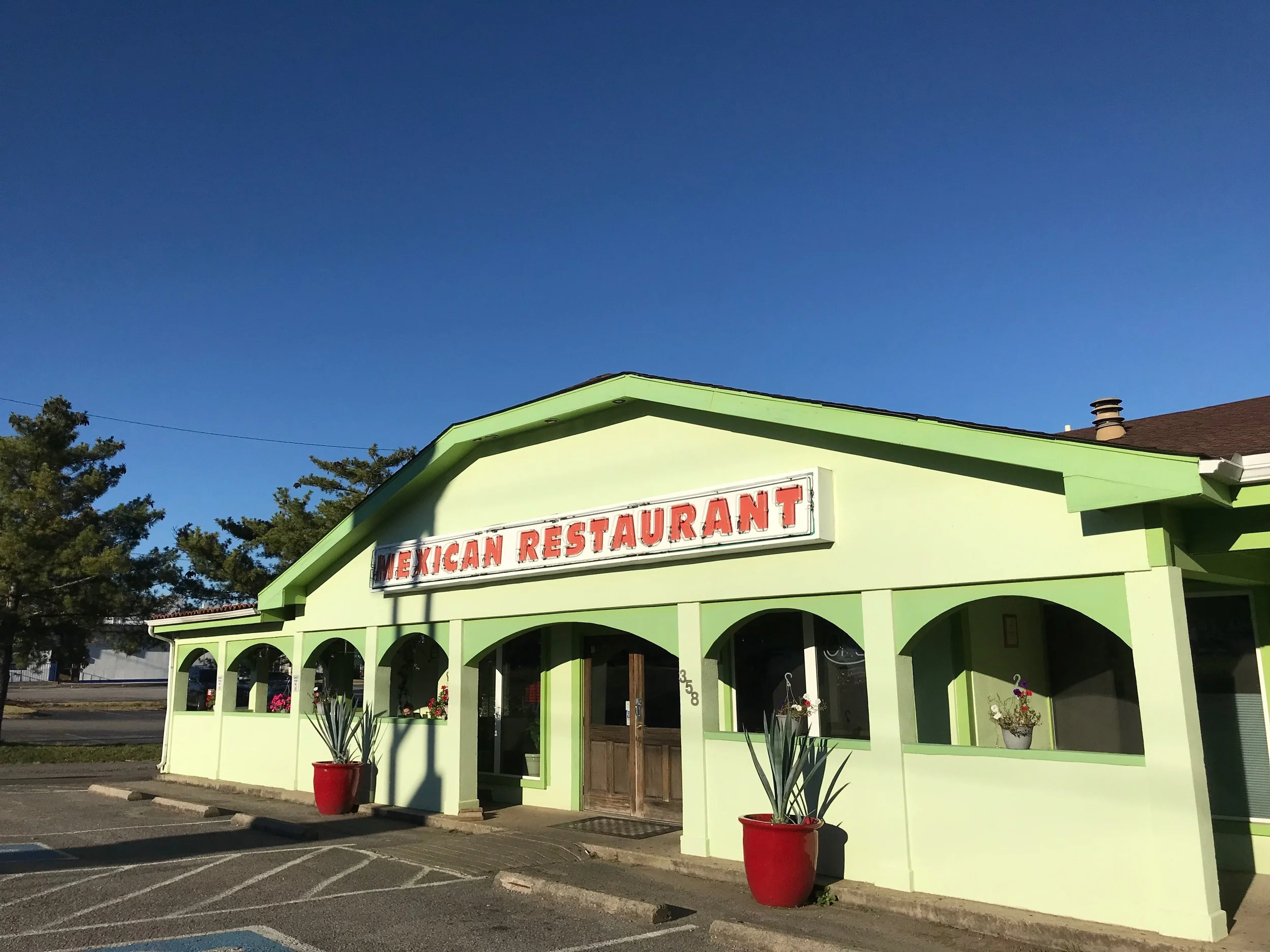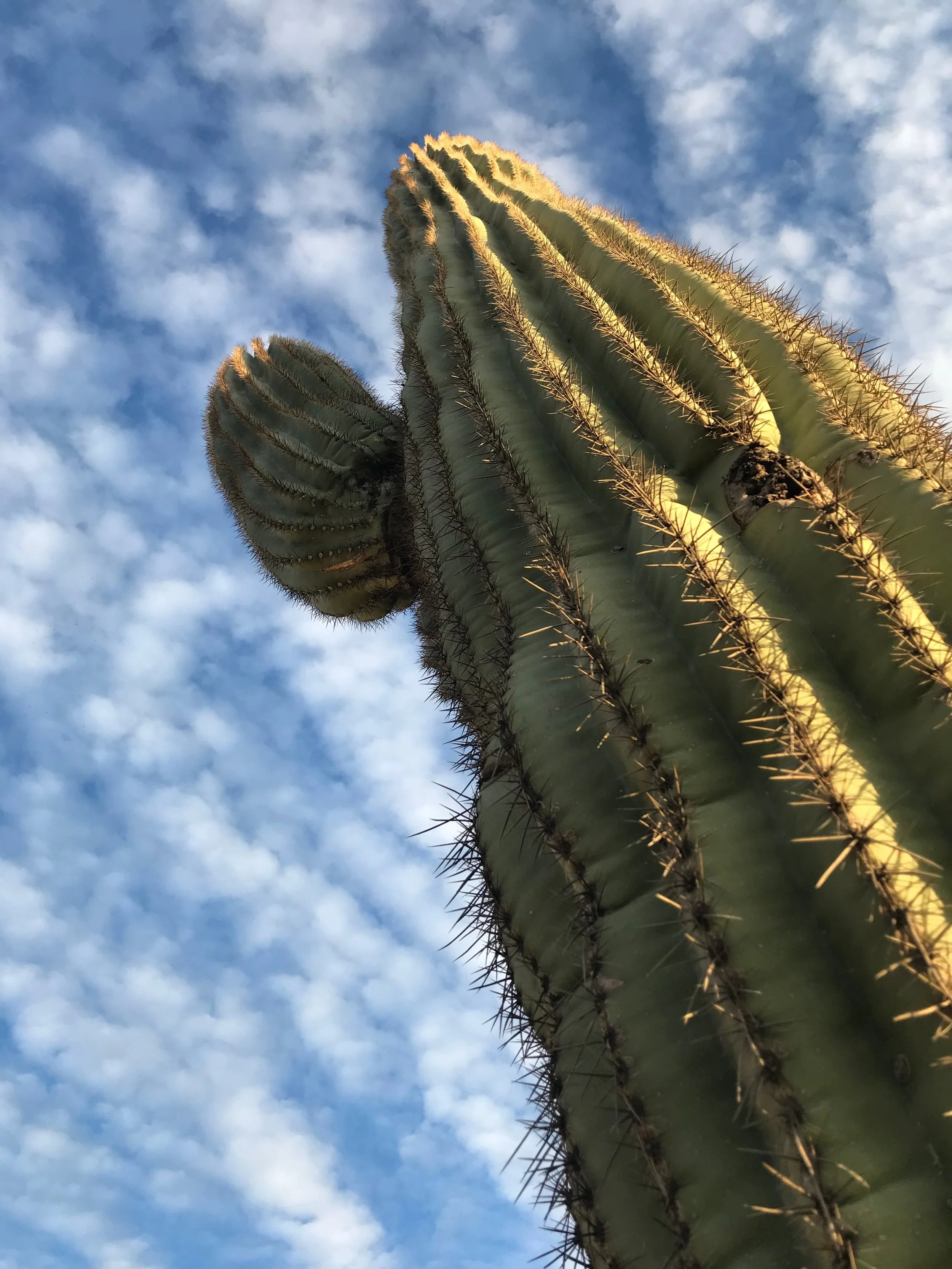Returning to the Desert: When Life Feels Dry and Despairing
The day after I turned 25, I brought home a cactus from the Nashville Farmer’s Market. He is round like a hedgehog and just as prickly as one, and his name is Coleman. I’m not convinced that I can keep him alive given that after about eight months, all my succulents have withered or self-imploded, but nevertheless, I’m holding out hope for this guy. For a long time he sat in the plastic cup that I bought him in until I finally introduced him to his permanent home in a recycled glass candle container on the windowsill in my study. Apparently in the spring, if the conditions are right, he will bloom bright pink buds. Before learning this about him, I never knew cactuses could flower; I never knew they could bear fruit, not when the conditions in its natural desert home are so tough. How can you thrive when rains rarely come and the soil is dry, rocky, unforgiving? How can there be life—bright, blooming life—in the desert?
The day before I brought Coleman the Cactus home—the day that I turned 25—I flew back to Nashville from a weekend in NYC with dear friends to eat Mexican and roast marshmallows with other dear friends. And for my birthday, these same friends pooled together their money and offered it to me as a gift. “For your cactus,” the accompanying card read.
***
I have friends who are in the desert right now. Life feels dry; hope feels impossible. Every day is the same, wandering through an endless stretch of sand and rocks without a clear sense of direction, the sun beating down without reprieve. As the infinitely-wise sociologist and author Brené Brown writes, “Despair is a spiritual condition. It’s the belief that tomorrow will be just like today.” The desert feels so much like a place of despair, a place of death.
I’ve also spent time in the desert. For a year of my life I wandered and I wondered if this was how life would always be: an endless string of same.
Let me tell you about the plans sweet, naive 22-year-old Ally had for her life as a new college grad: I was going to get that coveted first full-time job, and I was going to prove my worth working in PR in the music industry. I was going to have plans every weekend with friends; throw in a committed relationship for bonus points, and my life would look like what I’d grown up imagining your twenties would be: a time of margaritas and pencil skirts and effortless happiness.
Spoiler: This did not happen.
Let me tell you what actually happened in my life as a new college grad: I got that first full-time job, and the mundanity was miserable. I questioned my worth, my purpose, my entire career path that I thought had been my dream all throughout college. Life was extraordinarily ordinary, I was painfully lonely, and anxiety stopped in for routine visits; it was anything but margaritas and pencil skirts and effortless happiness.
Enter stage left: my crisis of purpose, my crisis of self-worth, my crisis of faith. The desert season.
For anyone who was close to me then, they know the desolation I felt on a soul-deep level. I grieved the loss of how I thought that year would be for me; I grieved my broken expectations. I experienced a disorienting faith crisis, storming out of church a time or two, because did God even care at all? Was He a personal God who cared about our seemingly inconsequential worries like a lack of purpose and deflated sense of self-worth, or did He simply create us The Sims style—pick out our hair color, eye shape, skin tone—then set us on this earth with a pat on the head and instructions to “be good”?
I was pretty sad in those desert days—but mostly angry—angry that I was sad, angry that I was angry, angry about all the feelings I carried with me, unsure what to do with them all, intent on bagging them up and throwing them in the dumpster like I do with used cat litter.
To anyone who has yet to experience a crisis of purpose or self-worth or faith, what I’ve just written might sound excessively melodramatic. I know what you might be thinking, because when I was in that desert period, I faulted myself for how I felt: What right did I have to be sad when I lived such an objectively good life, one free of war or poverty or disease? I had a home and friends that are simply too good to me and a supportive family and financial stability. I even had a Poodle and a now-alarmingly-obese cat named after C.S. Lewis. How could I lay claim to sadness when my life was void of the traditional tragedies that I equated to “real problems”?
Despite all the good things present in my life then, my year’s sojourn in the desert felt like a place of despair, a place of death—“the belief that tomorrow will be just like today.”
***
“I want to go to Phoenix to get my tattoo,” I told three of those friends who had given me my birthday gift.
There’s this story in the Bible, in the Old Testament, that tells of the prophet Samuel raising up a monument as a reminder of God rescuing the Israelites from battle; without God’s help, they were basically S.O.L. Ebenezer, they called the monument: “stone of help.”
And so I wanted to return to the desert—to pilgrimage back to the place where I really got to know God. Because in that aimless wander through my desert season two years ago, I came to the real desert for the first time, landing in Phoenix on a grey Friday morning in December. And without asking permission, Phoenix snatched away a little piece of my heart, declaring “mine!” like a toddler laying claim to a toy. The desert broke my heart open wider than just about anything with its fiery sunsets and cactuses as tall as trees and and airport goodbyes and dark skies lit up by flashing meteors.
The real desert wrecked me, and so did the metaphorical one—burning away my faulty views about what it meant to live a “happy” life. My year in the desert opened my eyes to my pride, to my unhealthy resentment of any emotion I considered “bad,” to my hesitation toward vulnerability, to my maddening need for control, to my deep distrust in anyone, myself included.
But in that year, I got to know God as an actual being and not just some abstract concept illustrated in children’s books. For some reason, I don’t talk about this a lot—how God has worked in my life—which is a shame, because I promise you I would be 73% more of an insufferable, bitter cat lady than I currently am had it not been for me finally prioritizing an actual relationship with God. In that year of me angrily questioning whether God cared at all, He showed up for me in incredibly personal ways, writing a wild story for my life that my own pen could’ve never inked.
If you and I were getting coffee, a distressed wooden table between us in a refurbished coffeehouse that feels like home, I would tell you these stories of my desert season in full. Stories of straight-up miracles, like how God gave me money to finally move past my self-defensive pride and go to counseling so I could learn how to be a human with human emotions, rather than shaming myself for having those aforementioned human emotions. Stories of how He took me down a path of working with refugees for a year—a job I would have never planned for myself (see above for my plan of having the “cool” music industry job). Stories of wanting to run away but learning that healing is a slow process that doesn't come at the departures gate. Stories of how I learned just how important my relationships are, that living the society-approved idea of “I need no one, I got this on my own” just makes you awfully lonely, and loneliness can affect you in very real, visceral ways.
But even with all these life lessons, for a long time I thought I wouldn’t be able to return to the desert (the real one, that is). After all, that was a tough year for me, and I’m an enormously nostalgic, story-driven, swoon-a-li’l-too-hard-over-metaphors person, and place holds deep meaning for me, perhaps to a fault. Could I return to the actual desert and face the ghosts of that year again—those feelings of lack of direction, lack of purpose, lack of worth?
But then my friends gave me a gift—“for your cactus”—and I told them I wanted to go to Phoenix to get my tattoo. I wanted to return to the desert to raise my own Ebenezer—a cactus inked on my wrist as a reminder of what God had done for me in my own desert season. And somehow (SERIOUSLY HOW THO!!) I am lucky enough to have friends who say “yes” to buying plane tickets when I suggest they come to Phoenix with me to get tatted.
On my return to the desert, I hiked dusty trails up mountains and through vast valley expanses, walking in the sunshine and in the rain and as the wind blew cold through our jackets, over rocks and through canyons and sliding down muddy inclines, under “skies that pull you into infinity, like the ocean,” as Anne Lamott describes it. I listened to coyotes sing songs of dusk and I sat on a rock as a bobcat passed casually in front of me (!!!), and I explored a cliffside cave 2,200 feet above sprawling miles of untouched wilderness covered in cactus forests and squat underbrush. And I returned to a mountain south of the city; with Bon Iver murmuring his melancholy melody in my ears, I watched the sunset—the sun sinking below a distant range, the sky set aflame—bright orange dancing with deep blues and pinks, the mountains surrounding the city cast in a rose glow.
And on our final day, we took a hike with my friend’s uncle, a man who has called Arizona home for 30 years, a man well-versed in the language of the Sonoran desert. And he told us stories of life: cactuses that live hundreds of years and springtime blooms, the desert dotted with color.
I read that the Seguaro cactus—the ones that grow like trees in the wide desert landscape, the ones that residents wrap in Christmas lights for the holidays—I read that these, on average, can grow to 40 feet tall and live up to 200 years. In the spring, just like my own little cactus named Coleman, these can bloom white flowers and then in the summer, red fruits.
How can there be life—bright, blooming life—in the desert?
I didn’t know that life could be found in a place as desolate as the desert. But two years later, as I returned to that mountain rock overlooking Phoenix, this resurrection city tucked within the arid valley, serenaded by the wind winding over the cactus-covered mountain ridges, I was reminded that the desert has purpose: It’s a place of burning away all the things that you have built as self-defense mechanisms, burning away your false ideas that life is all about you, you, you, burning away your faulty notions that once you reach a certain point in your career or once you get married or once you find the perfect city to call home, then you will be happy.
The desert may be a place of burning, but it is not a place of despair or death. Your plans, your selfish notions, will be burned away, but still, you will find growth, you will find resurrection: up from the ashes, life—in bright, blooming abundance.
***
"Remember not the former things
Nor consider the things of old.
Behold, I am doing a new thing;
Now it springs forth, do you not perceive it?
I will make a way in the wilderness
And rivers in the desert."
- Isaiah 43: 18 - 20
BUY 1, GET… AS MANY AS YOU WANT!
Windrose Magazine is your guide to navigating life in your twenties through a collection of essays, interviews, and advice that will inspire you to chart your own life course, free of comparison.
PLEASE NOTE: We can only ship within the United States. We still love our international friends, promise!
Magazine ships from our HQ within 7-10 business days of order. All sales final.
INVENTORY SALE: Buy 1 copy, get … as many as you want! Yes, really. We will contact you after purchase through the email you submit during the checkout process to confirm how many copies you would like.
Please note that orders of 10+ copies will incur additional shipping fees. Order limits are subject to remaining inventory count.














A cardstock print sits propped against the lamp on my desk: a taupe watercolor swipe outlining a peakside Saguaro, the sun a tiny ring above. Beneath this minimalist illustration are these words in typeface: “I will make a way in the wilderness and rivers in the desert.”
I happened upon this notecard-sized print on the way out of a shop last weekend, after already having completed another purchase. It was the last print of its kind in the pile. I had to have it. I returned to the cashier: “This one, too.”
You see, this verse has been a thread weaving through my story, simple words spoken by a prophet long dead, a passage of comfort I’ve returned to again and again since my pilgrimage to the desert four years ago, when I inked a cactus on my wrist.